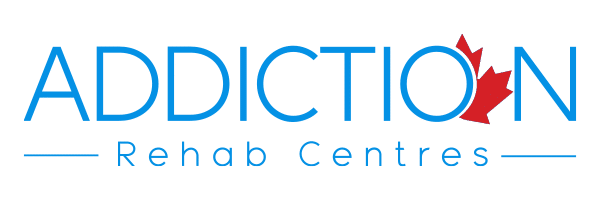Signs and Symptoms of Substance Abuse
Substance abuse issues can be hard to spot but have the potential to cause significant ramifications for the individuals that struggle through them, as well as the families, close friends and loved ones that are residually impacted. From prescription opioids to hard street drugs and alcohol, many of the substances being consumed in today’s world – both recreationally and for medical use – are highly habit-forming and carry with them the potential for addiction. Of course, the extent of addiction issues varies from case to case; sometimes the problem will be apparent and obvious while other addicts will be better at drawing less attention to their condition.
It’s true that some addicts have suppressed their problems from friends and family for years, however, if we are highly observant and know what triggers and signs to look for, it may help us to identify addiction issues that have manifested in those close to us. While substance abusers may feel embarrassed or uncomfortable disclosing their situation, identifying the signs and symptoms of substance abuse in ourselves or others can lead to frank and honest conversations and, ultimately, the afflicted individuals using the intervention as a springboard for seeking treatment.
In this blog post, we will go through many of the red flags associated with substance abuse from changes in personality to financial issues. The identification of drug and substance abuse isn’t a perfect science, and this isn’t intended as a be-all-end-all guide but rather a summary of many of the clearest warning signs. Naturally, when many of the warning symptoms laid out in this guide are present side by side in an individual, the likelihood that they may be a victim of addiction is more evident.
It’s important to remember that substance abusers don’t fit a specific profile. Issues can form at any time in people’s lives from the adolescent years to high school and onwards. The stereotype of drug abusers as downtrodden, scruffy and desperate is equally questionable. Substance abusers can be – and often are – any member of society from community leaders to politicians and respected businesspeople. Addictive drugs don’t discriminate, and substance abuse issues aren’t indicative of poor character. Substance use disorder is a disease that can befall anyone from any walk of life—a reality that should always be kept in mind when dealing with drug and alcohol addictions and their victims. Now, keeping everything we’ve touched on in mind as a basis for the discussion, let’s take a look at some of the clearest and obvious signs and symptoms of substance abuse.
Shifting Priorities and Changes in Behaviour
Once substance abuse becomes a reality, priorities often begin to shift for individuals as much as life becomes centred around drug use rather than previously important activities like work, school, sports, family and friends, as well as other activities. In serious cases of a substance use disorder, the afflicted individual may begin to struggle to meet their obligations related to these former priorities. This shift in behaviour is often due, in part, to the fact that many prescription drugs, hard drugs and alcohol are central nervous system depressants, meaning that they tire out the individuals taking them and dull their interest and motivation in pursuing rigorous activities such as after-school sports programs or undertakings requiring deep concentration such as playing music or writing a long paper for a school class.
Of course, beyond the sensory dulling effect of drug abuse, there are several other reasons that they can cause a shifting in priorities. Many substance abuse issues result in addicts needing to extend their prescriptions beyond their doctor’s recommended usage or continue to bankroll a stream of expensive and difficult-to-obtain street drugs. This may mean practices like “doctor shopping,” or pursuing additional doctors to receive the prescription again and again, but one thing is a general certainty—a sizable sum of money will be required to maintain the drug use. Therefore, attaining additional funds through one means or another can often take precedent over old priorities like physical activity, etc.
In addition to shifting priorities, individuals experiencing substance abuse disorder may also exhibit serious alterations in their general mood, persona and overall behaviour and character. This is also due, in part, to the physical and mental impact that binge drug and alcohol abuse can have. For example, a hard street drug like cocaine carries with it the potential for violent mood swings, oratorial changes, violent actions, risky behaviour, and other concerning factors. This is just one substance, but many of the drugs that are at the epicentre of today’s conversation on substance abuse disorder carry with them behaviour-altering qualities.
In line with shifts in priorities and behaviour, other signs of substance abuse disorder may include poor personal hygiene, dramatic sleeping patterns (or insomnia) and other shifts in what was previously considered ordinary behaviour. Physical signals can include bloodshot eyes, hallucinations, irritability, nausea, tremors, seizures, watery eyes and weight loss.
Relationships will Suffer
Unsurprisingly, suffering and dwindling relationships are clear and obvious signs and symptoms of substance abuse, as well. This reality makes a lot of sense given that a drastic shift in addicts’ priorities, attitudes and behaviour can leave friends, colleagues, loved ones and family members wondering what happened to the person that they used to know. This is an example of an instance where, if those relationships were sincere and meaningful, it’s important to not “give up” on the person struggling through addiction. Through support and early intervention, it’s absolutely possible that the addicted individual can seek help and return to the person they once were and resume leading a healthy, fulfilling life. Given that many cases of addiction aren’t wholly obvious, this situation will require a judgement call in assessing whether the shift in personality is due to addiction issues or simply growing apart or acquiring new, differing interests. If you believe it’s the former, supporting the afflicted individual can make all the difference.
In many cases of substance abuse, important friendships and other relationships may be replaced with new ones as the addict forges a bond with other individuals that are interested in supporting and taking part in the habit. The depth of these types of friendships can vary from case to case, but they are often rooted in co-dependence rather than sincere caring and affection.
One last factor in relationship woes when it comes to substance abuse is tied to financial wellbeing. Whether we like it or not, money and overall financial security is a significant factors in any relationship. Whether that means paying our rent on time, squaring a debt of loaned money from a friend, or otherwise, many of these seemingly basic financial obligations have the potential to cause serious conflict in cases of drug abuse. An example of this would be if a parent gave their child the money to pay for their local sports league and then they turned around and spent the money on their substance addiction instead. Not only would this create a rift and a serious lack of trust in this relationship once the transgression had been discovered, but relationships with that addict’s former teammates, coaches and community members would also likely suffer as a result.
In summary, we can conclude that a residual effect of drug abusers’ change in behaviour and shift in priorities, relationships are sure to be impacted, as well. All of these factors are tied in together and don’t occur without one another. All of this is to say that substance abuse disorder is far from simple. It doesn’t generally cause one problem on its own, but rather results in a falling dominoes effect wherein many different elements of life are affected gradually over time. If you or someone you know is exhibiting several of the habitual and characteristic changes outlined above, you can always contact an addiction specialist to identify the best next steps in addressing the issue. And, keep in mind that you’re not alone. Substance abuse disorder is a rampant issue affecting much of society. For proof, just take a look at the numbers.
Substance Abuse: A North American Snapshot
Substance abuse issues cost Canadian taxpayers $22.8 billion per year. In America, over 19.7 million citizens battled substance use disorder alone in 2017, according to stats compiled by the Substance Abuse and Mental Health Services Administration (SAMHSA). Many of these victims are young people or young adults, with 443,000 adolescents aged 12-17 suffering from alcohol abuse alone in 2017. These statistics are clearly indicative of an epidemic issue across North America where people – both old and young – are unquestionably suffering through dire straits of sorts, which can be partially attributed to today’s availability of substances amongst many other factors.
While we’ve taken a look at some important signs and symptoms of drug abuse, it’s also important to understand some of the underlying causes of addiction. Environmental factors such as peoples’ genes account for 40-60 percent of someone’s proclivity for addiction. Once again, it’s essential to reiterate that drug addiction is not a sign of poor character but rather a disease that needs treatment.
Many different types of drugs (amphetamines, barbiturates, benzodiazepines, opioids, prescription drugs, etc.) and alcohol consumption accounts for the epidemic we’re now seeing. Over 966,000 American adults suffered from cocaine addiction in 2017. That same year, over 652,000 people in the same demographic suffered from heroin use disorder. Building on these troubling numbers, 1.7 million in the same category had pain reliever use disorder, often associated with prescription drugs and including tranquilizers, stimulants and sedatives. Alcohol abuse, possibly the most significant due to sheer numbers and the fact that it’s so socially acceptable, was prevalent for 14.5 million Americans in 2017.
Now that we’ve reviewed the signs and symptoms of substance abuse disorder and come to an understanding of how deep the issues run both in Canada and America, we must also understand how to address these issues once we’ve identified them in ourselves or those close to us. The first and most important step in any addiction case is identifying that a problem exists. Once that’s achieved, an addiction specialist or healthcare practitioner should be contacted in order to chart out a successful addiction treatment, recovery and detox plan.
SAMHSA offers a 24/7, 365 helpline for addiction that can be utilized for finding addiction specialists and rehab centres, or even if someone suffering through addiction simply wants someone to speak with to talk through their issues. It can be reached at 1-800-662-4357 (HELP). Likewise, in Canada, the Canadian Government offers this type of resource province-by-province, the numbers for which can all be found on its website.
Recovery is possible and can be accomplished with the proper support systems and rehabilitation plans. If we are educated on the signs and symptoms of substance abuse disorder, it will strengthen our ability to identify the occurrence of addiction in those around us, which can prove invaluable in helping those that are afflicted chart a path to recovery.






